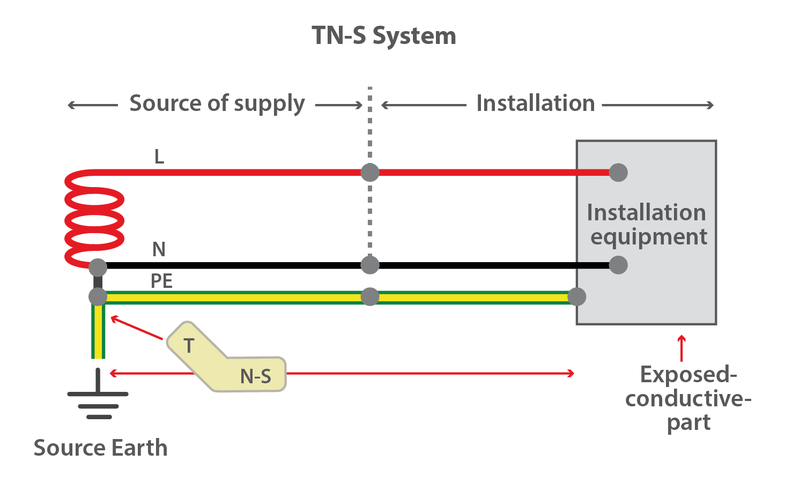Bonding TN-C-S (N-PE): Difference between revisions
Created page with "= TN-C-S = A TN-C-S system conductor of a distribution main connected with earth at source and at intervals along its run. This is usually referred to as protective multiple..." |
|||
| (2 intermediate revisions by the same user not shown) | |||
| Line 17: | Line 17: | ||
* T = Earth (from the French word Terre) | * T = Earth (from the French word Terre) | ||
* N = Neutral | * N = Neutral | ||
* I = Isolated | |||
<br> | |||
* S = Separate | * S = Separate | ||
* C = Combined | * C = Combined | ||
= Reference = | = Reference = | ||
# [https://www.gses.com.au/getting-down-to-earth-earthing-explained | # [https://www.gses.com.au/getting-down-to-earth-earthing-explained Getting Down to Earth Earthing Explained] | ||
[[Category : Electricity]] | [[Category : Electricity]] | ||
Latest revision as of 01:07, 7 February 2021
TN-C-S
A TN-C-S system conductor of a distribution main connected with earth at source and at intervals along its run. This is usually referred to as protective multiple earthing (PME). With this arrangement the distributor’s neutral conductor is also used to return earth fault currents arising in the consumer’s installation safely to the source. To achieve this, the distributor will provide a consumer’s earthing terminal which is linked to the incoming neutral conductor.
TN-S
Earth Neutral Separation
TN-S describes an arrangement where separate conductors for Protective Earth (PE) and Neutral are run to consumer loads from a site's power supply (i.e. generator or transformer). The PE and N conductors are separated in nearly all parts of the system and are only connected together at the supply itself.
Terms
- T = Earth (from the French word Terre)
- N = Neutral
- I = Isolated
- S = Separate
- C = Combined

